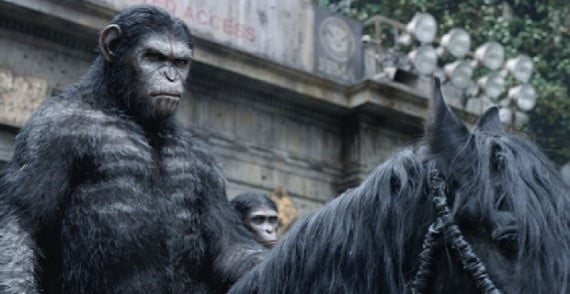
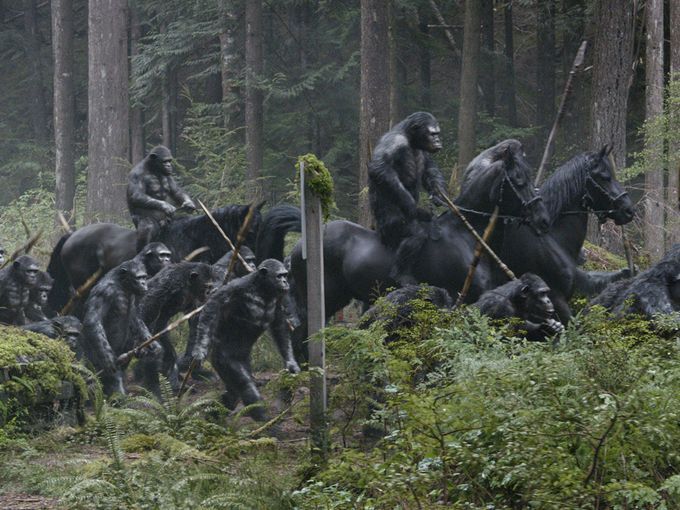
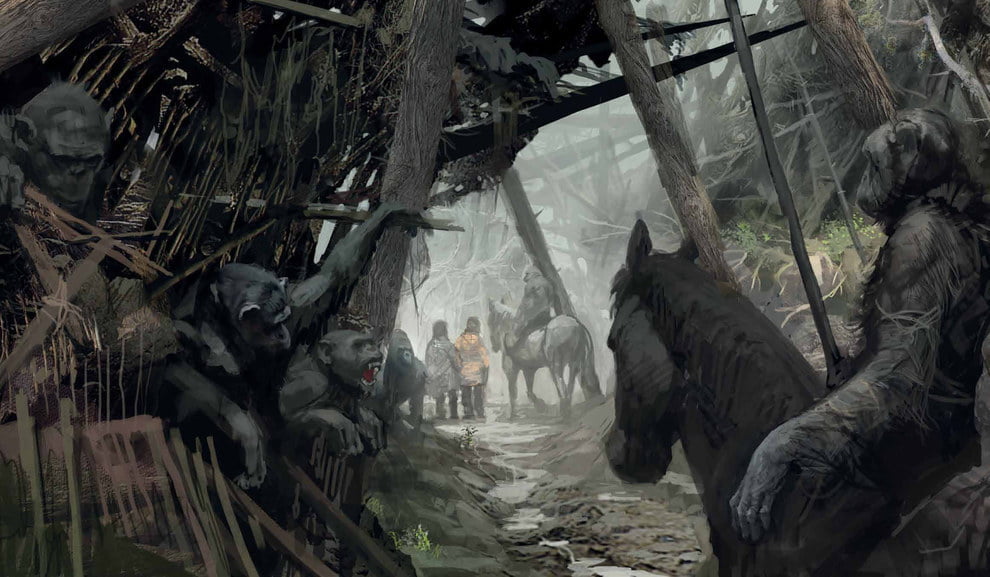
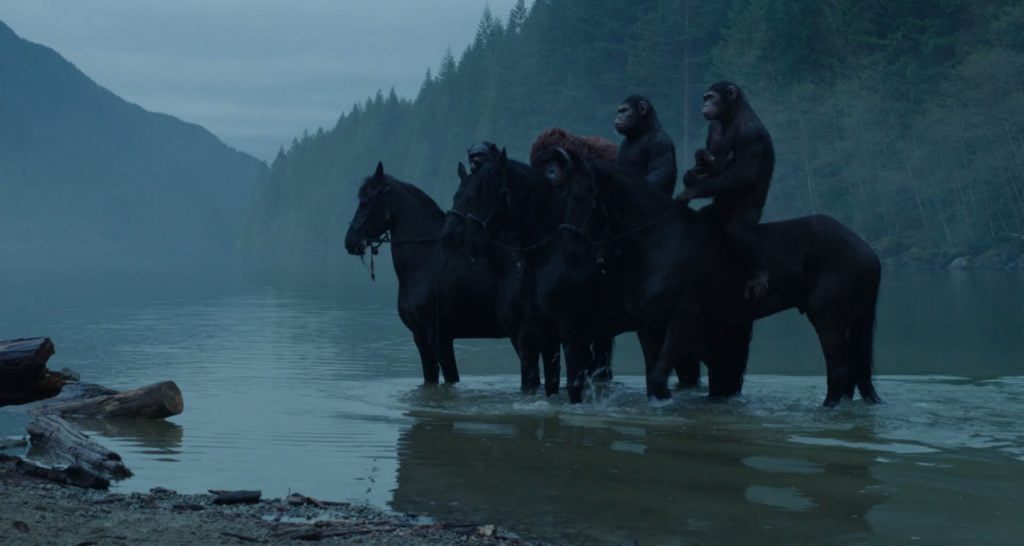
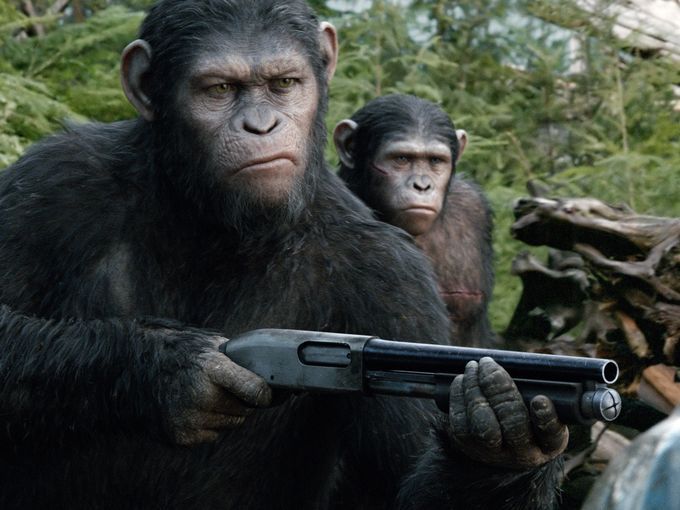
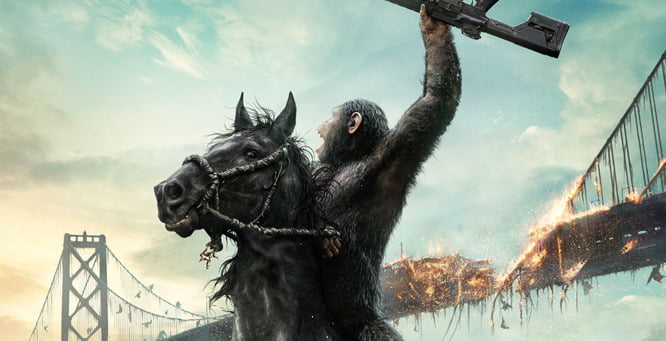
It is not, as Eileen Jones points out, the kind of image that forces that farcical exchange of humans for the might-as-well-be human animals that so often populate cartoons and children’s stories. The apes, in this singular segment of their presumed post-human evolutionary path, are both like us and not like us. They perform some sense of humanity through the adoption of our primitive infrastructures of civilization, most explicitly through their own mastery of our domestication of the horse. In so doing, they weigh the grandeur of its place in our grand history of human exceptionalism and differentiation with the unfamiliarity of seeing that history now usurped.
But this vision of the not-human’s performative choreographies is balanced by a kind of counterpoint, the violent imagery of the apes, streaked with tribal paint, joined by gesture, united for the hunt. This is not to say that the this kind of hunt, which features the apes swinging through the trees armed with that quintessential tool of primitive imagination, the spear, is inhuman, or purely animalistic. It is not. But where the image of the man astride horseback is imbued with (even today) an almost elegant sense of mastery, the fevered pace of the hunt seems to evoke a more darkly brutal vision. And while the image of the hunt plays out as a more chaotic and viscerally violent spectacle, it is through their mastery of the horse that the apes most closely demonstrate the human calling to ecological domination.
Jones ultimately sees the captivation of the unfamiliarly familiar image as a kind of hopeful promise of a cycle we hope to be broken, but the fascination of the images of a new society so completely inhabiting the most fundamentally human “tools,” suggests also the powerful entrenchment of not only the material embodiments of human civilization. Zaius’ determination to keep apes out of the Forbidden Zone warns against the (literally) earth-shattering contaminants to be found there, but also of a more subtle kind of influence, that the very idea of human progress and patterns is not only materially durable, but imaginatively infectious. The film is filled with images that explore the subtle slippage between the human, the animal, and the inhuman (perhaps most strikingly in Caesar’s poignant acceptance of his own, so-to-say, humanity near the film’s end). But in the collective sense, this vision comes to its most elaborate and disturbing imagination as the apes, in the grip of a violent coup, march on the humans with guns loosely held and in the chaos of a camera caught on top of a spinning tank. It has neither the honest brutality of the hunt, nor the elegant domination of the horse. An image disturbing more in the context of the perceived loss of humanity in the apes then in the violent consequences for the real humans. Even though, in a sense, it represents the pinnacle of that most human of acts—war.


